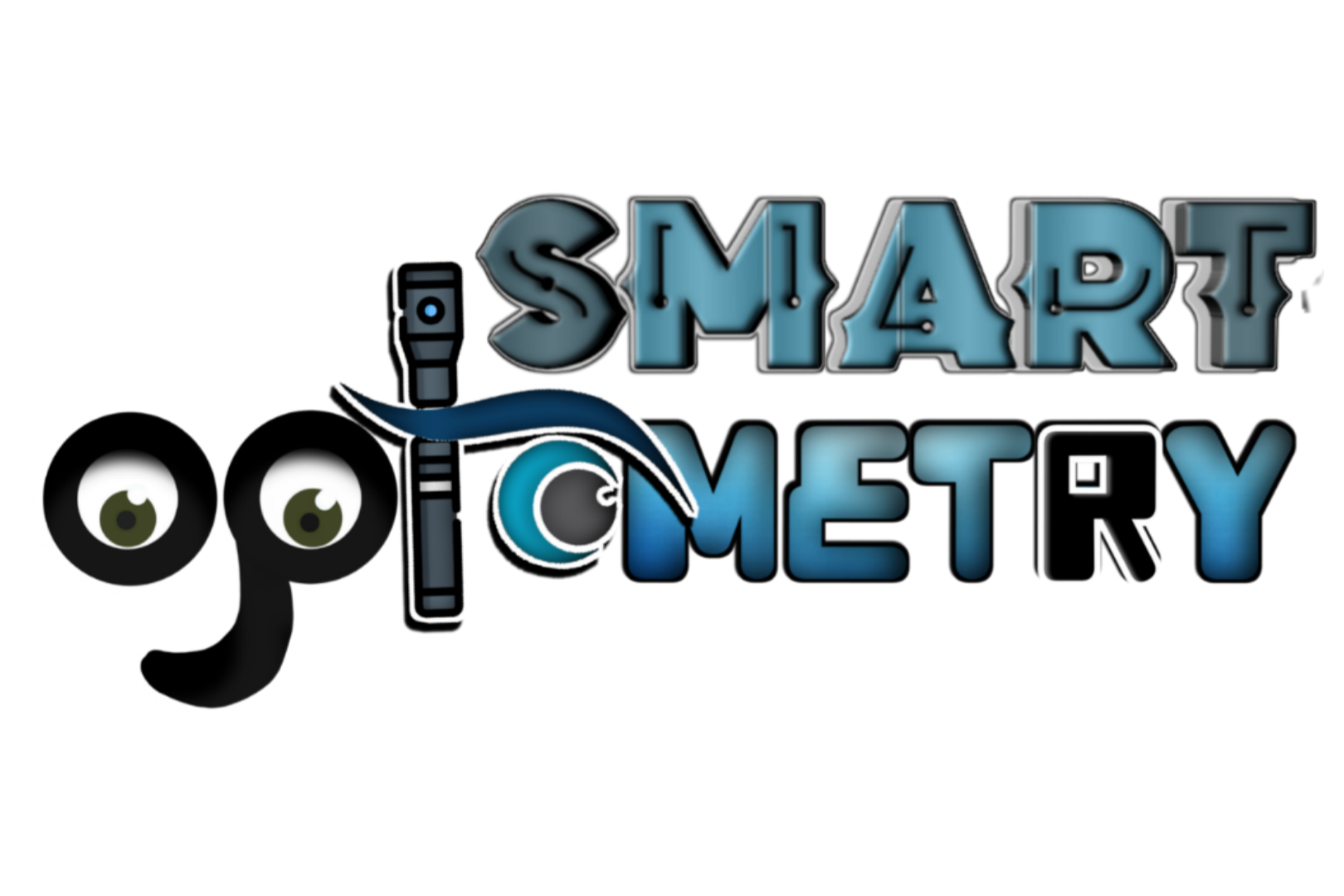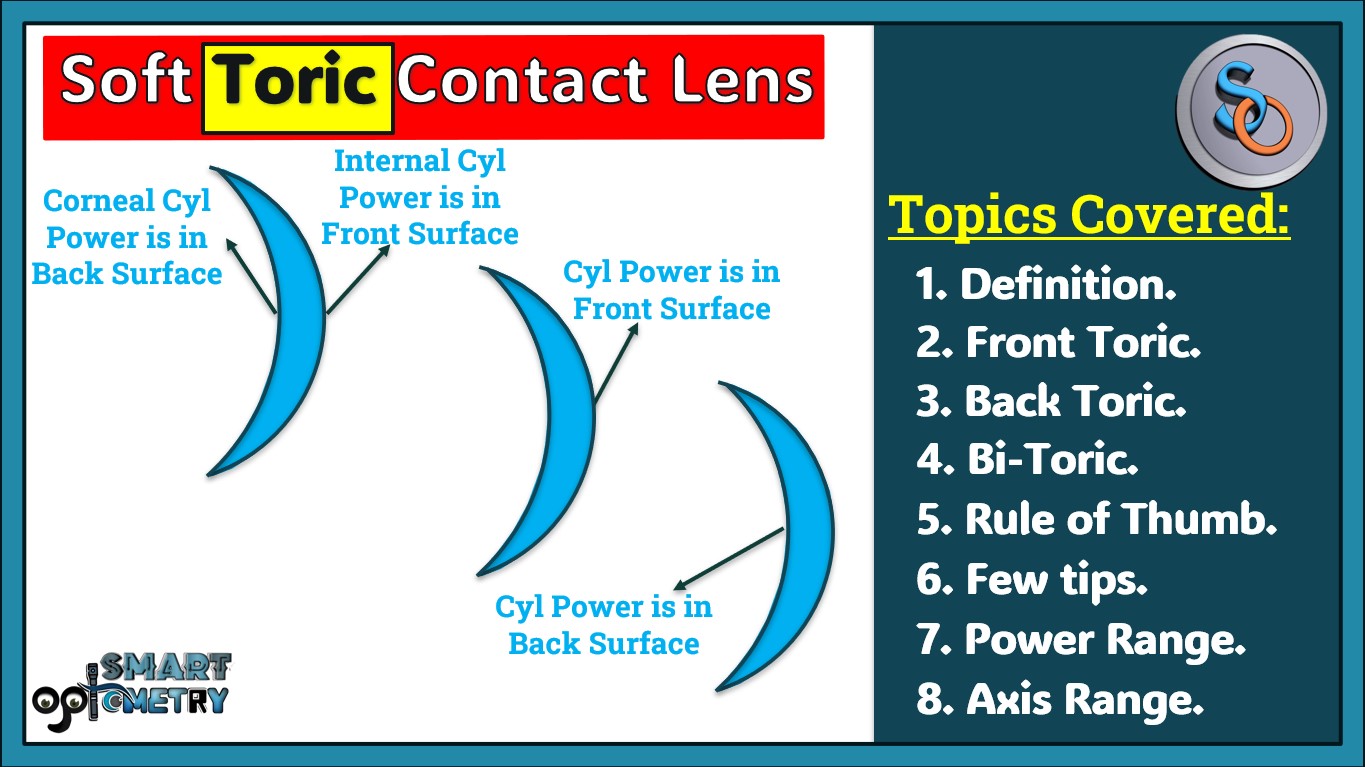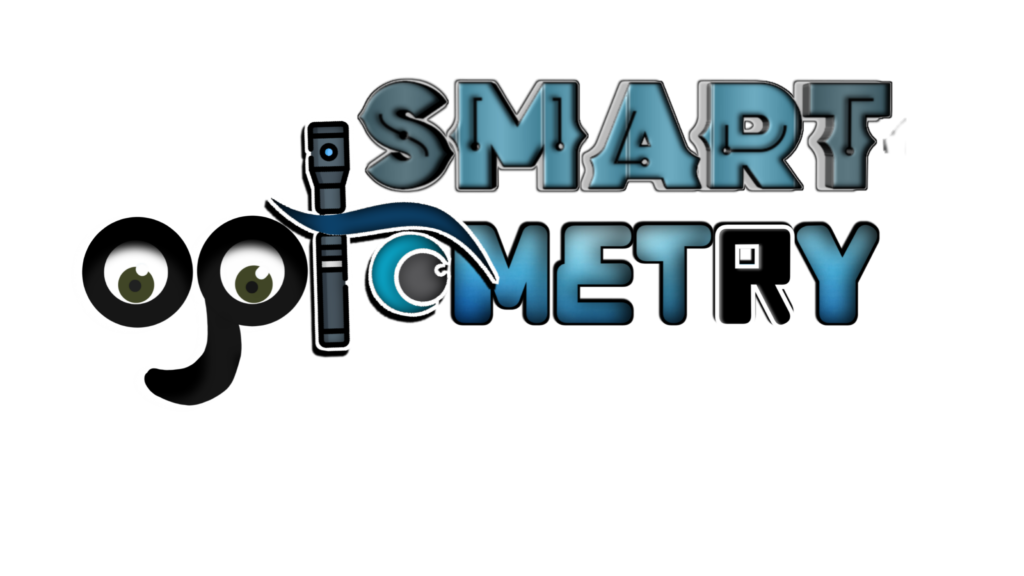Table of Contents
Soft toric Contact Lens:
Soft toric contact lenses are specifically designed to correct astigmatism, a common refractive error characterized by irregular curvature of the cornea or lens. While spherical soft contact lenses can address mild astigmatism of 0.50 to 0.75D through the use of tear lens or spherical equivalent power, they may not provide adequate correction for higher degrees of astigmatism.
For astigmatism exceeding 0.75D, soft toric contact lenses become essential. Unlike spherical soft lenses, toric lenses feature different powers in different meridians to correct both spherical and cylindrical refractive errors. This allows for precise alignment with the irregular shape of the cornea, providing clear and comfortable vision.
While spherical rigid gas permeable (RGP) lenses can correct up to 3D of corneal astigmatism, they may not be suitable for all patients. RGP lenses reshape the cornea to correct astigmatism, which can lead to intolerance in some wearers. Additionally, if the astigmatism is internal (lenticular or retinal), RGP lenses may not be the ideal choice.
In such cases, soft toric contact lenses offer a comfortable and effective alternative. Soft toric lenses provide stable vision correction for both corneal and internal astigmatism, ensuring optimal visual acuity and wearer satisfaction. With their tailored design and precise fitting, soft toric contact lenses offer a reliable solution for individuals with astigmatism.
Front Toric Design:
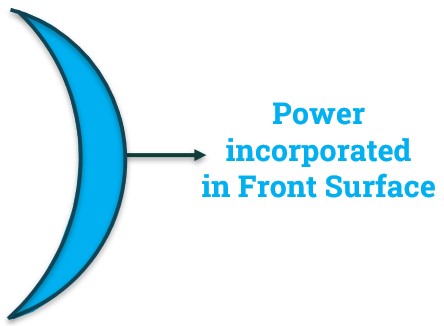
A front toric contact lens design is specifically tailored to correct internal astigmatism by incorporating the corrective power on the front surface of the lens. Internal astigmatism refers to irregularities in the crystalline lens or retina, which can cause blurred or distorted vision.
The difference between total astigmatism and corneal astigmatism is termed internal astigmatism. While total astigmatism is measured using retinoscopy or autorefractometry, corneal astigmatism is assessed with a keratometer. The discrepancy between the readings of K1 and K2 on the keratometer indicates corneal astigmatism.
For instance, if retinoscopic power is noted as -3.00/-1.50 X 180, but keratometry indicates K1 = 44 @ 90 and K2 = 45 @ 180, with a difference of 1.00D, the corneal astigmatism is 1.00D. Therefore, the internal astigmatism would be calculated as 1.50D (retinoscopic) – 1.00D (corneal) = 0.50D.
A front toric contact lens is customized to address this internal astigmatism, ensuring clear and precise vision correction. By incorporating the corrective power on the front surface of the lens, it compensates for the irregularities in the crystalline lens or retina, providing optimal visual acuity for the wearer.
Back Toric Design:
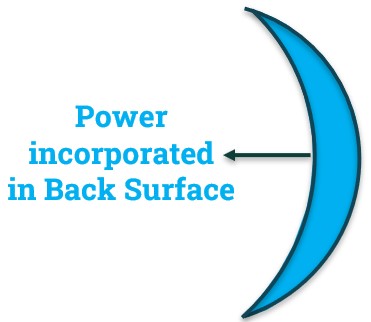
A back toric contact lens, also known as a soft toric contact lens, is specifically designed to correct corneal astigmatism, which arises from the irregular shape of the cornea rather than internal factors like the crystalline lens or retina. Unlike spherical contact lenses, toric lenses have different powers in different meridians, allowing them to compensate for the irregularities of the cornea.
In a back toric design, the corrective power is incorporated into the back surface of the lens. This design enables the lens to align properly with the irregular curvature of the cornea, providing clear and stable vision correction. By attaching snugly to the corneal surface, back toric contact lenses ensure consistent visual acuity and comfort for the wearer.
Bi-Toric Design:
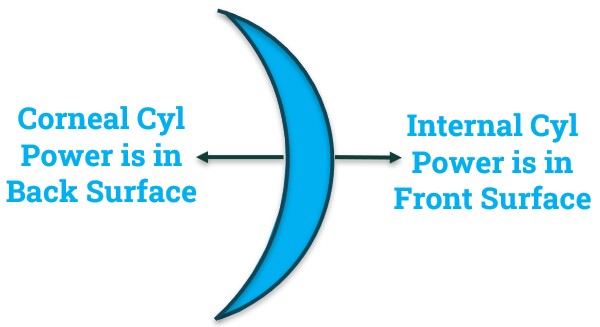
A bi-toric contact lens, also known as a soft toric contact lens, is specifically designed for patients with both corneal and internal astigmatism, or those with high levels of astigmatism. This type of lens is uniquely crafted to address the complex optical needs associated with irregularities in both the cornea and internal structures of the eye.
In cases of high astigmatism, the corrective power is distributed across both the front and back surfaces of the lens. The front surface of the toric soft contact lens is tailored to correct internal astigmatism, which arises from irregularities in the crystalline lens or retina. Meanwhile, the back surface of the lens is designed to address corneal astigmatism, which results from irregularities in the curvature of the cornea itself.
By incorporating corrective power on both surfaces, bi-toric contact lenses provide comprehensive and precise vision correction for individuals with complex astigmatism. This dual-surface design ensures optimal alignment with the irregularities of both the cornea and internal structures of the eye, resulting in clear and stable vision for the wearer.
The rule of thumb spherical Equivalent in soft toric contact lens prescriptions:
The rule of thumb in soft toric contact lens prescriptions provides guidance on when to use the spherical equivalent for correcting astigmatism. According to this rule, if the ratio of spherical power to astigmatic power exceeds 4:1, it’s generally acceptable to correct astigmatism up to 0.75D using the spherical equivalent. However, if the ratio falls below 4:1, relying solely on the spherical equivalent may compromise patient comfort.
For example, let’s consider two cases:
In Case 1, the prescription is -5.00/-1.00 X 180. The spherical equivalent would be -5.50D. Here, the ratio of spherical power (-5.00D) to astigmatic power (-1.00D) is 5:1, indicating that the astigmatism is within the range that can be corrected comfortably using the spherical equivalent.
In Case 2, the prescription is -2.00/-1.00 X 180. The spherical equivalent would be -2.50D. In this case, the ratio of spherical power (-2.00D) to astigmatic power (-1.00D) is 2:1, which is less than 4:1. Therefore, relying solely on the spherical equivalent may result in discomfort for the patient.
It’s important to note that while this rule of thumb provides a general guideline, modern practice may not strictly adhere to it. Instead, optometrists consider various factors, including patient comfort, visual needs, and lifestyle, when determining the most suitable method for correcting astigmatism in soft toric contact lens prescriptions. Additionally, advancements in lens technology have expanded the options available for effectively correcting astigmatism while ensuring patient satisfaction.
When it comes to soft toric contact lenses, here are a few essential tips to keep in mind:
1. Manufacturing Increments:
Soft toric contact lenses are typically manufactured in 0.50 steps. This means that available powers may include 0.75, 1.25, 1.75, 2.25, and 2.75 diopters. However, it’s important to note that some powers, such as 1.0, 1.50, and 2.00 diopters, may not be readily available.
2. Limited Power Options:
Be aware that certain power increments may not be offered by all manufacturers. Therefore, it’s crucial to check the available power options before selecting a soft toric contact lens.
3. Axis Increments:
The axis, which determines the orientation of astigmatic correction, is available in 10-degree steps. Common axis options may include 10, 20, 30, and 40 degrees. However, similar to power increments, certain axis values, such as 5, 15, 25, and 35 degrees, may not be available.
- Check Our Courses: Ophthalmic Instrumentation, Clinical Refraction, Contact Lens, Binocular Vision, Dispensing Optics, MCQs in Optometry
- Download our App “Optometry Notes & MCQs” from Google Play Store.
